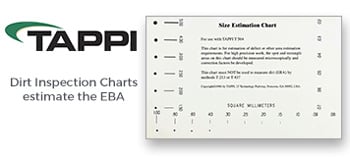Mill experience with an energy saving laminar design screen basket in the paper machine approach system, 2013 PEERS Conference

Please Note: This document will be available in PDF format in the "My Electronic Documents" link on the home page once your order has been completed. Please make sure you have the latest version of Acrobat Reader. Click on the Acrobat Reader icon to check for the latest version, it’s FREE. To print a hardcopy of a PDF file correctly you must have a postscript printer. If you are not sure if your printer is a postscript printer please refer to your owner’s manual.
Purchase of electronic (downloadable) documents made at www.tappi.org by credit cards, followed by instant download CANNOT be cancelled. We do not offer refunds on electronic download documents.
The introduction of the fine-slotted wedge wire screen basket has been a significant advance in machine screening technology. Wedge wire baskets doubled the open area compared to conventional milled screen baskets, increasing screening efficiency while enhancing screened pulp properties. Depending on the amount of impurities and flocs in the paper machine approach flow, ultra narrow slots are needed to guarantee the accept pulp quality but screening with narrow slots is a challenge. With conventional wedge wire designs, the very narrow slot size leads to a rapidly increasing pressure drop over the screen basket and a corresponding increase in pumping energy required to counteract the restriction in screening capacity. A new laminar design wedge wire has been developed to reduce the pressure drop over the screen, providing high screening efficiency, reduced stringing and excellent runnability. This paper describes how Computational Fluid Dynamics (CFD) simulations have been used to optimize flow at the screen boundary layer and reduce flow resistance in the accept channel, lessening thickening and thereby the load on the screen. Several examples from machine screening are discussed, where considerable savings have been achieved from the reduced energy needed for the headbox feed pump to achieve the same headbox pressure compared to conventional screening technology.





